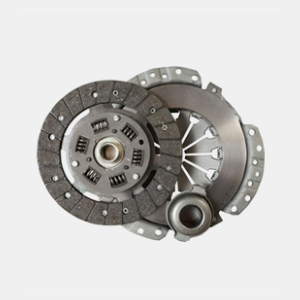-
 Afrikaans
Afrikaans -
 Albanian
Albanian -
 Amharic
Amharic -
 Arabic
Arabic -
 Armenian
Armenian -
 Azerbaijani
Azerbaijani -
 Basque
Basque -
 Belarusian
Belarusian -
 Bengali
Bengali -
 Bosnian
Bosnian -
 Bulgarian
Bulgarian -
 Catalan
Catalan -
 Cebuano
Cebuano -
 China
China -
 Corsican
Corsican -
 Croatian
Croatian -
 Czech
Czech -
 Danish
Danish -
 Dutch
Dutch -
 English
English -
 Esperanto
Esperanto -
 Estonian
Estonian -
 Finnish
Finnish -
 French
French -
 Frisian
Frisian -
 Galician
Galician -
 Georgian
Georgian -
 German
German -
 Greek
Greek -
 Gujarati
Gujarati -
 Haitian Creole
Haitian Creole -
 hausa
hausa -
 hawaiian
hawaiian -
 Hebrew
Hebrew -
 Hindi
Hindi -
 Miao
Miao -
 Hungarian
Hungarian -
 Icelandic
Icelandic -
 igbo
igbo -
 Indonesian
Indonesian -
 irish
irish -
 Italian
Italian -
 Japanese
Japanese -
 Javanese
Javanese -
 Kannada
Kannada -
 kazakh
kazakh -
 Khmer
Khmer -
 Rwandese
Rwandese -
 Korean
Korean -
 Kurdish
Kurdish -
 Kyrgyz
Kyrgyz -
 Lao
Lao -
 Latin
Latin -
 Latvian
Latvian -
 Lithuanian
Lithuanian -
 Luxembourgish
Luxembourgish -
 Macedonian
Macedonian -
 Malgashi
Malgashi -
 Malay
Malay -
 Malayalam
Malayalam -
 Maltese
Maltese -
 Maori
Maori -
 Marathi
Marathi -
 Mongolian
Mongolian -
 Myanmar
Myanmar -
 Nepali
Nepali -
 Norwegian
Norwegian -
 Norwegian
Norwegian -
 Occitan
Occitan -
 Pashto
Pashto -
 Persian
Persian -
 Polish
Polish -
 Portuguese
Portuguese -
 Punjabi
Punjabi -
 Romanian
Romanian -
 Russian
Russian -
 Samoan
Samoan -
 Scottish Gaelic
Scottish Gaelic -
 Serbian
Serbian -
 Sesotho
Sesotho -
 Shona
Shona -
 Sindhi
Sindhi -
 Sinhala
Sinhala -
 Slovak
Slovak -
 Slovenian
Slovenian -
 Somali
Somali -
 Spanish
Spanish -
 Sundanese
Sundanese -
 Swahili
Swahili -
 Swedish
Swedish -
 Tagalog
Tagalog -
 Tajik
Tajik -
 Tamil
Tamil -
 Tatar
Tatar -
 Telugu
Telugu -
 Thai
Thai -
 Turkish
Turkish -
 Turkmen
Turkmen -
 Ukrainian
Ukrainian -
 Urdu
Urdu -
 Uighur
Uighur -
 Uzbek
Uzbek -
 Vietnamese
Vietnamese -
 Welsh
Welsh -
 Bantu
Bantu -
 Yiddish
Yiddish -
 Yoruba
Yoruba -
 Zulu
Zulu
barrier safety net
Understanding Barrier Safety Nets Ensuring Protection in High-Risk Environments
In various industries, safety remains a paramount concern, especially those involving construction, manufacturing, and large-scale events. One essential tool that has emerged to enhance safety protocols is the barrier safety net. These nets are designed to protect individuals from falling debris and other hazards, serving as a crucial line of defense in potentially dangerous environments.
A barrier safety net is typically constructed from robust materials such as nylon or polyethylene, which are known for their strength and durability. These nets are often installed in elevated locations, such as scaffolding or near edges of high structures, where the risk of falling objects or personnel is significant. By creating a protective barrier, these safety nets help prevent injuries and save lives.
The installation of barrier safety nets is governed by strict safety regulations and standards. In many regions, compliance with occupational safety and health regulations is mandatory, ensuring that the nets installed can withstand specific weights and impacts. The testing and certification of these safety nets are crucial, and manufacturers must adhere to rigorous industry standards to guarantee their efficacy in real-world applications.
barrier safety net

Barrier safety nets are versatile and can be tailored to suit various settings. For example, in construction sites, they can be used to catch falling tools or materials, protecting workers and preventing damage to property below. In sports venues, safety nets can prevent spectators from being accidentally struck by flying objects, such as balls or equipment. In these scenarios, the nets act not only as protective barriers but also as reassuring measures that boost confidence among workers and event attendees.
The effectiveness of barrier safety nets extends beyond mere physical protection. Their presence can contribute to a culture of safety within an organization, emphasizing the importance of preventive measures. When workers see that their employers are committed to providing a safe working environment through the use of high-quality safety equipment, it fosters a sense of responsibility and awareness concerning safety practices.
Regular inspections and maintenance of barrier safety nets are essential to ensure their reliability over time. Environmental factors, such as weather conditions and UV exposure, can impact the structural integrity of the nets. Therefore, routine checks for wear and tear can help identify potential issues before they result in failure.
In conclusion, barrier safety nets are a vital component of safety management systems in hazardous environments. Their ability to prevent accidents and injuries underscores the importance of investing in high-quality safety equipment. By adhering to safety regulations, conducting regular maintenance, and fostering a culture of safety, organizations can significantly reduce risks and ensure the well-being of their workers and the public. The implementation of barrier safety nets not only protects individuals but also enhances the overall safety performance of operations, making them an indispensable part of modern safety practices.
-
Shipping Plastic Bags for Every NeedNewsJul.24,2025
-
Safety Netting: Your Shield in ConstructionNewsJul.24,2025
-
Plastic Mesh Netting for Everyday UseNewsJul.24,2025
-
Nylon Netting for Every UseNewsJul.24,2025
-
Mesh Breeder Box for Fish TanksNewsJul.24,2025
-
Expanded Steel Mesh Offers Durable VersatilityNewsJul.24,2025











